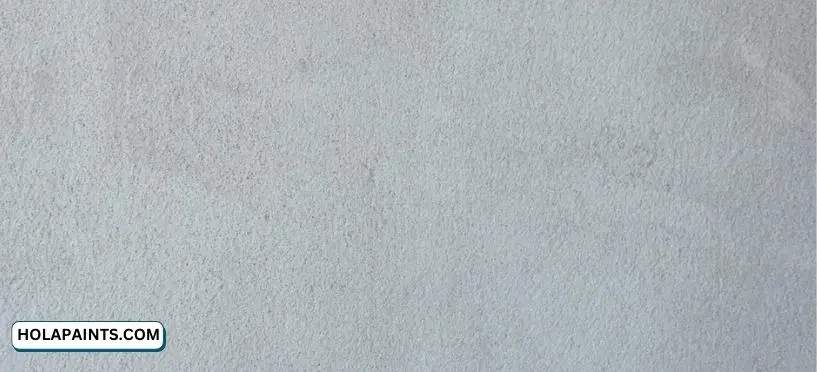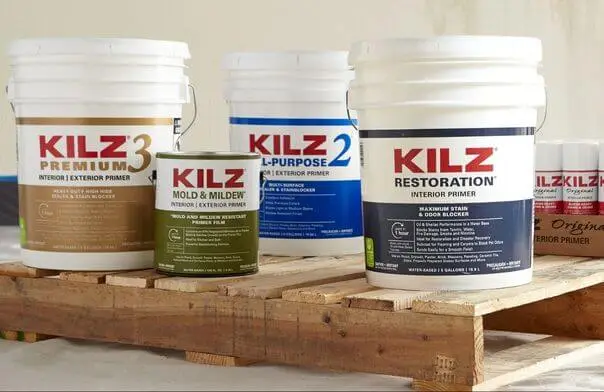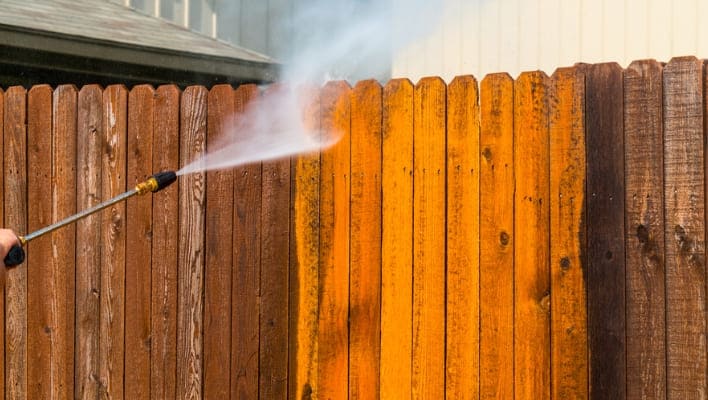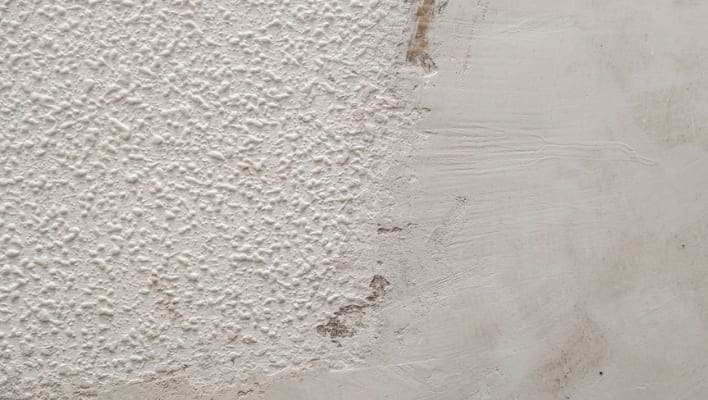Have you ever painted the surface and didn’t get the desired smooth result after the very coat of the paint? It is precisely where the primer can jump into your rescue. The purpose of the primer is to seal a porous surface, which gives us uniform coverage on the topcoat of the paint. Also, you can improve the coverage of the last coat of paint with a tinted primer to match the topcoat.
Since modern paints are expensive, reducing the need for additional coats can be cost-effective. A primer will make the topcoat adhere better to the surface. Having established the importance of primer, Now we need to focus on the burning question that has been there in everyone’s mind, how long does primer take to dry?
Here is a detailed guide describing how long to let the primer dry for best results.

Table of Contents
- How Long For Primer To Dry?
- Most Popular Primers- How Long Should Primer Dry Before Painting?
- Helpful tip:
- How Long Should Primer Dry Before Painting different surfaces?
- Metal
- Plastic
- Wood
- Drywall
- Key Aspects That Influence The Drying Time Of Primer
- The ideal conditions for priming
- Primer Types: How Long To Wait For Primer To Dry Before Painting?
- 1: Latex Primers:
- 2: Oil Primers:
- 3: Shellac Primers:
- 4: Self Priming Paints:
- Factors Affect Primer Drying Time
- 1. Temperature
- 2. A Humid Area
- 3. Layer Thickness
- 4. Ventilation
- How Long After Primer Can You Paint?
- How To Make Primer Dry Faster – Tips & Tricks
- * Try a fast-drying primer
- * Spray the primer
- * Check the Humidity Levels
- * Make use of your hairdryer
- Why Is It Bad To Paint Over Primer Too Soon?
- Bottom Line On How Long Primer Dry!
- FAQs
- Q: Is it necessary to let the primer dry for 24 hours?
- Q: Do I need to paint two coats of primer?
- Q: Is it necessary to have a perfect primer?
- Q: How long do you have to wait after applying primer?
How Long For Primer To Dry?
Primer can take up to 30 to 60 minutes, depending upon the factors which can influence the primer dry time. The drying time varies based on humidity, primer type, temperature, and the type of surface you are spray painting.
Most primers may take three hours to dry completely before painting. However, a warmer temperature and low humidity can speed up the drying process of primer. Here is a table showing the drying times for the seven most popular primers.
| BRAND | TYPE | DRYING TIME |
| Kilz Adhesion Interior Exterior Primer | Oil-Based | 30-60 minutes |
| Kilz 2 All-Purpose | Latex-Based | 60 minutes |
| Valspar Latex Satin | Latex-Based | 60 minutes |
| Behr Premium Plus Semi-Gloss Enamel | Self-Priming Paint | 1-2 hours |
| Zinsser Interior & Exterior Primer | Shellac | 25-60 minutes |
| Rust-Oleum Enamel Paint Metal | Oil-Based | 2-4 hours |
| Valspar Anti-Rust | Oil-Based | 2-4 hours |
Useful Resource: Please check out the article “Do you need primer before painting?” for a discussion on when to use primer and when to skip it.
Most Popular Primers- How Long Should Primer Dry Before Painting?
Primer types and brands vary in their drying times. You can choose from four classes: Latex-based, Shellac-based, Oil-based, and Self-priming. To get an idea of how long it takes for the primer to dry, please check the drying times of most popular primers.
Here is a list of the drying times of each type of primer, arranged by the amount of time it takes to dry them. As per our experience:
- How long does Shellac primer take for primer to dry?
- How long does Water-based primer take to dry?
- How long to wait for Self primer to dry before painting?
- How long does Oil-based primer take to dry?
- How long does Kilz primer take to dry?
- How long Zinsser Bull’s Eye dry?
- How long should Rust-Oleum primer dry?
- Shellac primer takes between 30 and 60 minutes to dry.
- Water/Latex primer dries in an hour.
- A self-priming paint dries less than an hour.
- An Oil-based primer takes 30 minutes to four hours to dry.
- Kilz primer takes to dry around 45-60 minutes.
- Zinsser Bull’s Eye primer takes around 35 minutes or less.
- Rust-Oleum Primer takes around 2-3 hours to dry.
Helpful tip:
- I usually strain all the primers and paints that pass through my spray gun. Even though it is an extra step, I truly want to ensure there is nothing in my paint or primer before it is sprayed.’
How Long Should Primer Dry Before Painting different surfaces?
Metal
The time required for drying and recoating depends on the 50% relative humidity and 70°F temperature. It may take longer at cooler temperatures. It dries to the touch within 15 to 30 minutes. Plus you can handle it within 1-2 hours, and the metal is fully dry in 48 hours.
Plastic
Primer may feel dry after 20 minutes on plastics but can completely dry the next day (after 24 hours).
Wood
The drying time of primer on wood can range 1 hour to 3 hours due to variations in wood moisture content and absorption qualities.
Drywall
Drywall primer usually dries quickly, typically taking around 45-60 minutes under normal conditions. In some cases, it may even dry within 15 minutes. Generally, you can proceed with painting after an hour, but drying times may vary based on the specific type and brand of primer used.
Key Aspects That Influence The Drying Time Of Primer

It may seem pretty simple to paint any surface or material, but there are several key steps to follow from the first coat to the final color.
Therefore, The primer drying times are determined by several factors, including the environment or the location you’re in, the type of primer you’re using, and the quality or quantity you put in the paint sprayer while doing paint.
The ideal conditions for priming
- High Temperature
- A low level of humidity
- Primer by a known brand
- A sprayer is used to apply primer
- A good ventilation system
Primer Types: How Long To Wait For Primer To Dry Before Painting?
Primer comes in four different types: Oil-based, Latex-based, Self-priming paint, and Shellac-based primer. It is important here to notice that the formulation of paints can differ based on their types.
1: Latex Primers:
For painting furniture and unfinished drywall, latex primers are the perfect solution. They have got fast-drying properties and take around 30 to 60 minutes at max to dry. They are also suitable for priming softwood, concrete and brick, and metals.
Any given area of the wall that has been repaired or patched, minor stains from smoke, crayon, lipstick can be covered and sealed in with these primers, but the coverage is not as great as oil- and shellac-based primers.
2: Oil Primers:
Over the years, oil-based primers, they been highly versatile and can be used for a wide range of surfaces since they work with both latex and oil paints.
Surfaces that already have paint on them and surfaces made up of metals, steels, and wood are ideal for oil-based primers. The drying process is slow, and it may take anywhere from half an hour to four hours to complete. Also, they emit high amounts of volatile organic compounds (VOCs).
3: Shellac Primers:
Shellac primers offer the most excellent stain-blocking power and work well on surfaces with severe water damage or smoke damage. A good way to prevent new paint from bleeding through is to use shellac-based primers to prevent the surface from rust, smoke, and water stains.
They are suitable for metal, wood, and even plastic; they quickly dry and take anywhere between 30-60 minutes (just like latex). It also has excellent adhesion. They are also compatible with oil and latex-based paints.
However, these primers give off more fumes. To thin them out, you’ll need denatured alcohol and clean applicators.
4: Self Priming Paints:
Self-priming paint also serves as a primer. Most self-priming paint dries to the touch in 60 minutes or less, with many ready for a second coat in under an hour. It’s been created to save your time & expense by eliminating the need to apply to wait between applications.
Factors Affect Primer Drying Time
1. Temperature
The primer should be dried at 40 to 77 degrees Fahrenheit or about 24 degrees Celsius. At lower temperatures, the primer will dry more slowly. So, if you are painting in a cold room, turn on the heating.
For example, Zinsser Cover Stain Primer recommends applying primer in temperatures of 40-80°F (4-27°C) at maximum humidity.
2. A Humid Area
Too much heat or humidity will delay the drying process significantly. High humidity areas dry more slowly than low humidity areas. The primer may become too thick (especially oil-based primers), making it challenging to apply.
3. Layer Thickness
It may not be enough to apply a thin coat of primer over the imperfections, and perhaps you should apply more. Using too many thin coats of primer will slow down the drying process. You can check your manufacturer’s instructions to figure out how many coats to apply.
Moreover, It will take longer for your paint to dry if it’s raining outside while you’re painting indoors. Therefore, it is best to wait until the cold weather reaches a steady level before applying primer, and by using dehumidifiers, you can decrease humidity and enhance ventilation.
4. Ventilation
Getting more airflow will help your primer dry faster. For this reason, Allow the air to circulate on your primed surface by opening the windows and blowing fans. Be sure there isn’t any dust or other particles in the air that might get in your primer and cause problems.
How Long After Primer Can You Paint?
It is important to wait until the primer dries. In general, latex- or shellac-type primers dry within 1-3 hours per coat. Water-based primers dry within 3-4 hours once applied. On the other hand, when you use an oil-based primer, the coat must be allowed to dry for 24 hours. Keep in mind that low temperatures and high humidity are both factors that extend drying times.
Quick Summary
| Type Of Primer | Time |
| Latex primers | 30 minutes to 1 hour |
| Oil based primer | 24 hours |
| Water based primer | 3-4 hours |
How To Make Primer Dry Faster – Tips & Tricks
There are a few easy ways to speed up the drying process of your primer. If you’re short on time, try these tricks so you won’t have to wait forever for your primer to dry. Here are some suggestions.
* Try a fast-drying primer
You may also consider a primer that dries quickly. One option is self-priming paint, which is designed for fast drying. If you prefer to use a separate primer instead of a two-in-one option, a latex primer would be ideal.
* Spray the primer
Thick primer coats will take longer to dry. So, coat the primer with a sprayer. A primer is best applied with a sprayer, which results in a thinner layer than brushing or rolling it. The primer should dry the same amount of time as paint if applied more than once.
Therefore, you should use thin coats of primer to ensure an even and smooth finish. If you’re priming outside, pick a day that is sunny or warm; otherwise, it will take longer for the primer to dry if it is cloudy or raining.
* Check the Humidity Levels
Here are a few things you can do to help your primer dry faster. For this purpose, you can use a dehumidifier which will reduce the home’s humidity level. Secondly, you can also open up the windows and doors to allow more air to circulate. It will speed up the dry time of the primer.
* Make use of your hairdryer
If you are unable to wait for the primer to dry, a hairdryer may be helpful for you. Use the hair dryer to blow air gently over the primed surface.
Make sure you are not using heat- use the cold air setting on the hairdryer.
Why Is It Bad To Paint Over Primer Too Soon?
Paint is applied over primer as an undercoat. It increases the durability and adhesion of the paint.
Before painting, the primer needs to be completely dry. Otherwise, the primer may pull away from the surface when you use paint. The surface will appear streaky, flaky, and the color could peel and look uneven as well.
If you apply paint too soon, the primer will mix with the paint, preventing it from adhering properly. Therefore, you should wait more than the recommended amount of time for drying. Rushing can result in a messy finish that doesn’t stick well.
After that you should perform the test in a small hidden area. Wait at least 30 minutes more after the primer feels dry to the touch. After waiting, apply paint in an unused area to make sure it does not change color, flake, peel, roll up, or mix with primer.
Bottom Line On How Long Primer Dry!
If you plan to paint, it is essential to know how long does primer takes to dry. For this purpose, you need to find the right type of primer that works well with the paint. Make sure to read the instructions on the can because the drying time of primer varies by brand and product. The process might take a while, and you may need to wait for ideal weather conditions. However, if you use a quality primer in the right conditions, you will achieve excellent results.
We suggest you consider all the factors we’ve outlined when picking the best day to paint. The environment affects the time it takes for your primer to dry, including the temperature and humidity, so keep a close eye on them to achieve the best results. Additionally, you can schedule your weekend DIY project once you know how long the primer takes to dry.
FAQs
Q: Is it necessary to let the primer dry for 24 hours?
Primer usually dries within an hour of application. If you need to apply another layer of primer, you should wait three to four hours. Unlike a water-based primer, an oil-based primer will need more time to dry out. For a second coat, allow it 24 hours to ensure that it is completely dry.
Q: Do I need to paint two coats of primer?
Most painting projects require two coats of primer. However, If your previous surface is dark, you may have to apply 3-4 coats to ensure that new paint adheres to the surface and conceal the odd colors.
Q: Is it necessary to have a perfect primer?
A primer coat doesn’t have to be perfect, it should cover the surface, and not look blotchy or uneven. Ideally, the primer should look even and have no visible drip lines. Primer does not need to completely cover old paint coats for the new paint to adhere flawlessly, but it should be applied uniformly.
Q: How long do you have to wait after applying primer?
Most latex primers dry to the touch within 30 minutes to an hour. The primer must dry thoroughly before the surface can be painted, which may take up to three hours. Humidity and cool temperatures make drying more difficult.

Jennifer Marie
Jennifer Marie is a general contractor with over the years of experience in home remodeling, DIY projects, and commercial painting projects. Her experience includes working with paint sprayers, painting tools, and other painting supplies. You can follow her on Facebook.


